Tuesday was a sunny day so, after running some errands, I visited a campground in Klamath National Forest to see what was blooming near the river. To my delight, the grassy stretches along the gravel road were dotted with clumps of California Poppies in orange and yellow. These are some of my favorite flowers to photograph because their colors are so bright and their shapes so sculptural.
The genus of California Poppies is one of the trickiest to learn, pronounce and spell: Eschscholzia. That’s pronounced: esk-SHOAL-zee-ah.
Where the heck did that name come from? According to Michael Charters, whose website, calflora.net, features a section explaining the botanical names of plants found in California, the genus is
named for Dr. Johann Friedrich Gustav von Eschscholtz (1793-1831), a Latvian or Estonian surgeon, entomologist and botanist who came with the Russian expeditions to the Pacific coast in 1816 and 1824. On their first visit to the San Francisco region in the Russian scientific ship Rurik, his name was put on the previously undescribed California poppy by his friend and companion Adelbert von Chamisso, who found it in the hills surrounding the bay.
Charters provides the following biographical details:
Eschscholtz studied medicine at the University of Dorpat (also called the University of Tartu) in Estonia where he was born and which was at the time a German-speaking territory, and later became a professor of anatomy there. On the scientific expedition he collected specimens in Brazil, Chile and the Pacific Islands as well as California. Bikini Atoll in the Pacific was originally named Eschscholtz Atoll and was renamed in 1946. Eschscholtz was only 37 when he died of typhus in Dorpat.
(On an alternate timeline, we might have a bathing suit called “Eschscholtz” lol.)
Linguistically-minded people might raise an eyebrow at the spelling of the name “Eschscholz” though, and there’s a good reason for that. As Charters goes on to say:
According to Curtis Clark at Cal Poly Pomona and others, his name was originally spelled Escholtz in German, but when it was transliterated into the Cyrillic alphabet by relatives of his who spent time in Russia, it became Eshcholts which had an 'sh' and a 'ch' sound both of which were expressed by the same Russian letter, and thus when converted back to German the 'sh' and 'ch' became 'sch' twice and the name became Eschscholzia. The 't' was dropped because Chamisso Latinized the name as Eschscholzius. In those days spelling was not the more rigid system in use today, and even Chamisso in different places gave the name as Eschscholzia, Eschscholtzia and Eschholzia. Chamisso though he lived in Berlin and spoke German with Eschscholtz was originally French.
All those yellow snaky bits are the flower’s stamens, the male parts who provide pollen.
On this flower, which is more mature, we can see the pistil, the female part, which is the green column in the center. In the floristic world, it is very common for a solitary pistil to be surrounded by multiple stamens. I like to think of this as a harem.
When all the petals and stamens fall off, this lovely disc is left at the base of the developing fruit (which will become a seed pod).
The fruit elongates as it matures. Inside, up to 100 seeds will develop.
This fallen petal, with stamens attached, looks like a moth lying on its back to me. I ate this after taking the picture. California Poppies are medicinal and are considered a mild sedative. They are not, however, opiates like their relatives in the Papaver genus.
A Vetch flower nestled in the California Poppy, like a sleeping bee.
Each stage of flowering is striking in appearance.
On the left, green, is part of the sheath that once covered the petals.
Here the sheath hangs like a tail.
A patch framed by Wild Mustard flowers, which are also hitting their peak right now.
Two stages of flowering, plus a developing fruit. Note on the bottom flower that the pistil is not green yet.
The contrasting blue-purple splotches behind this trio of California Poppies are Lupines.
California Poppy among clover, which might be Small-headed Clover (Trifolium microcephalum).
Blossoms in all stages, from bud to flower to fruit, against a backdrop of Scotch Broom (Cytisus scoparius), which is common in some anthropogenic disturbances in this area, like roadsides and clear-cuts.
A striking shape, with Vetch (genus Vicia).
California Poppy petals are so smooth and shiny.
Contrast between yellow and orange varieties.
California Poppy is quite at home in anthropogenic disturbances, which is why you often see them along roadsides.
Going for an artsy shot here.
Self-portrait with California Poppies and Vetch.


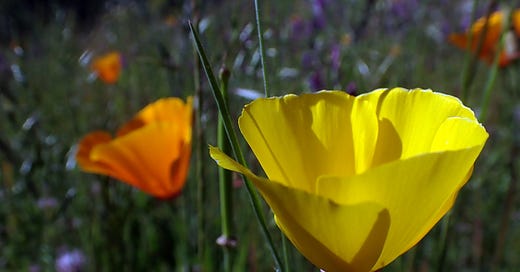



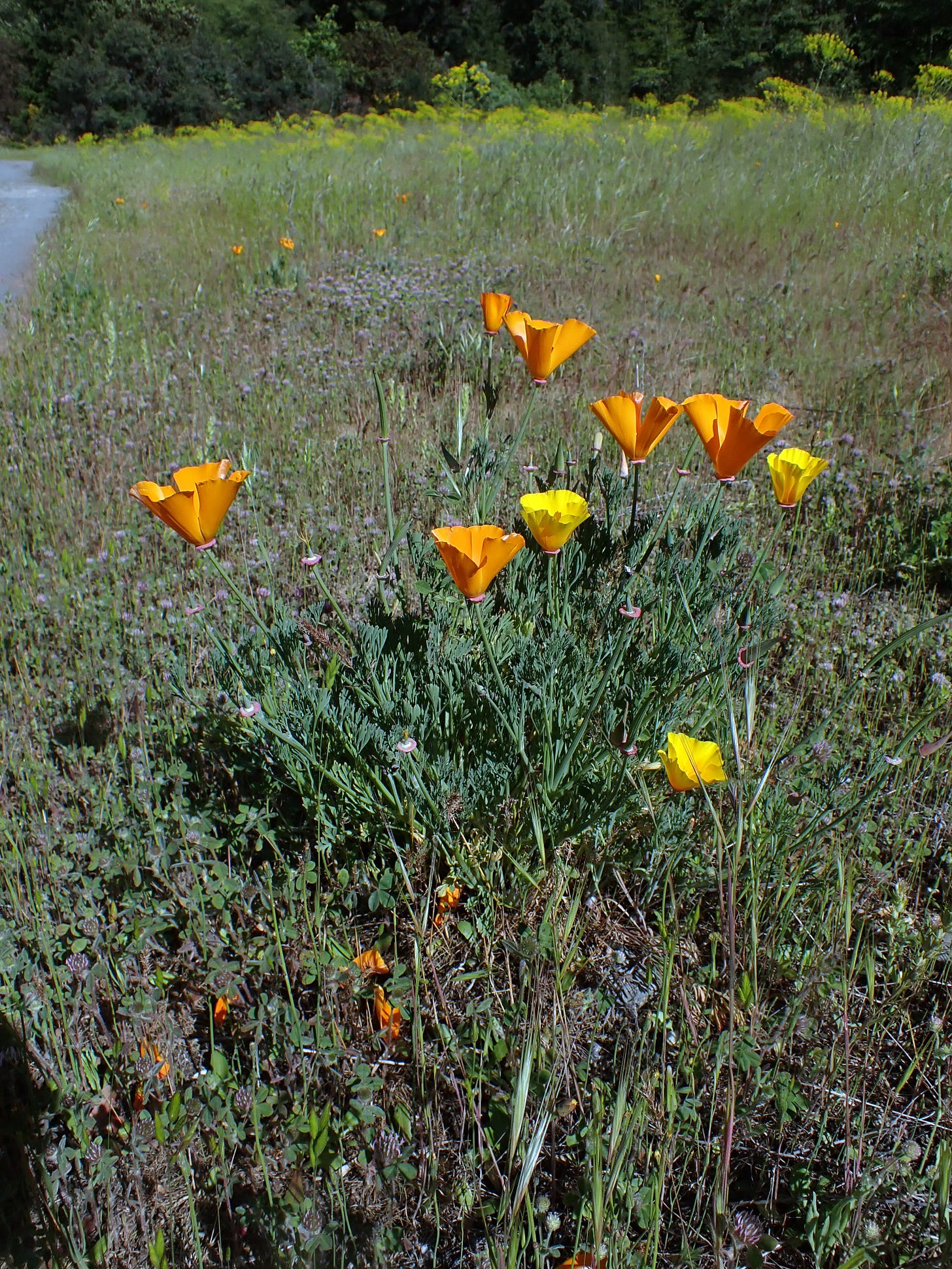
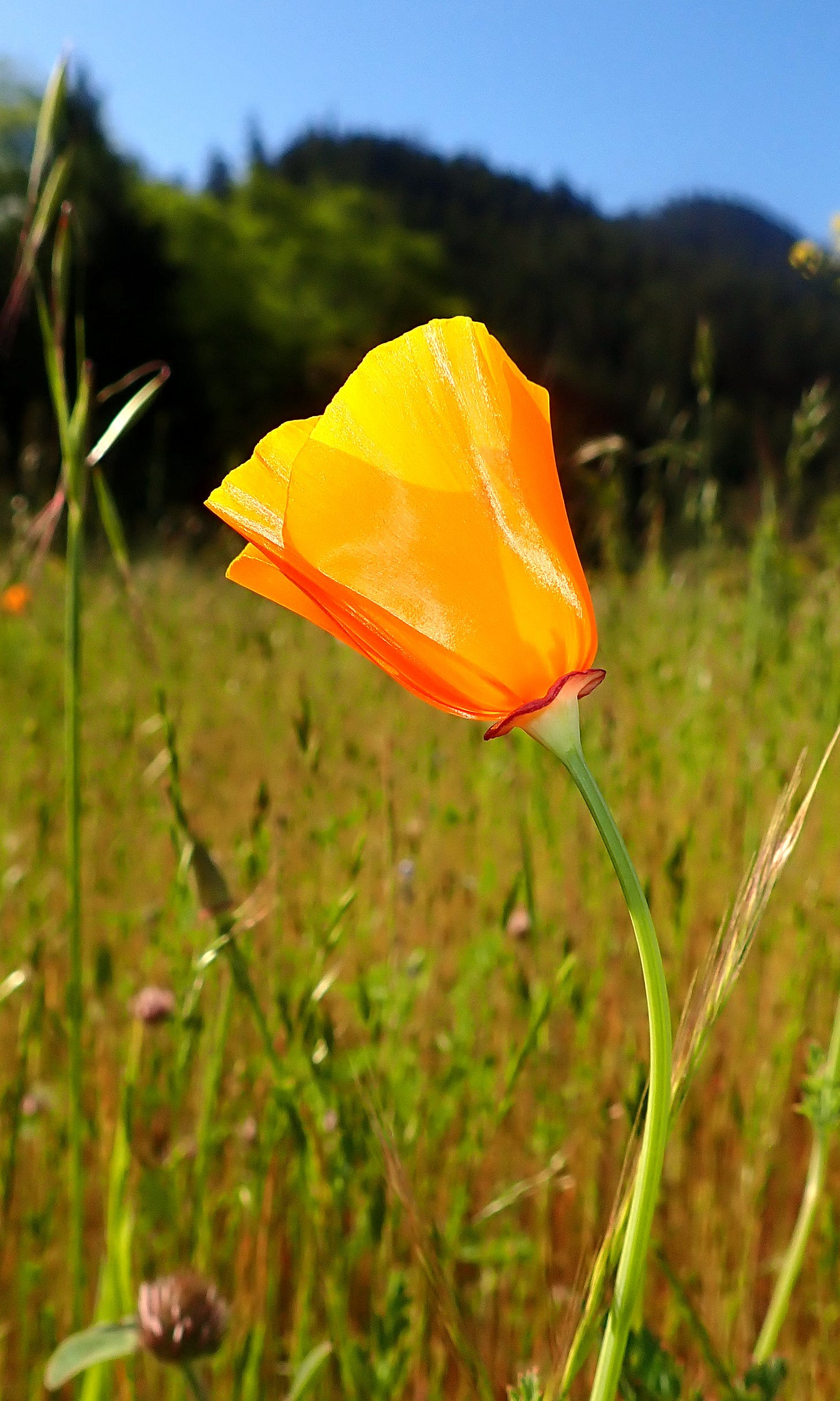
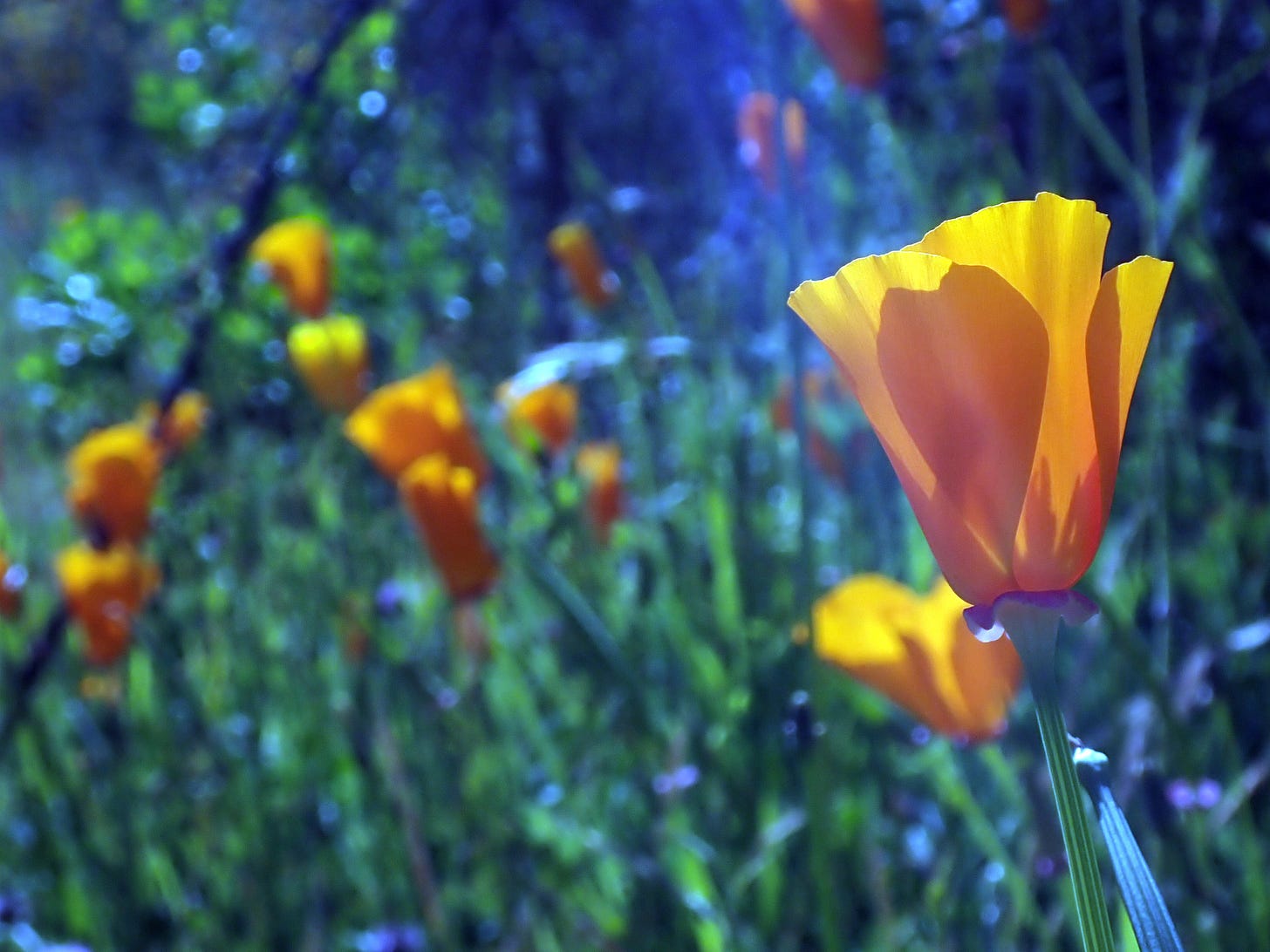

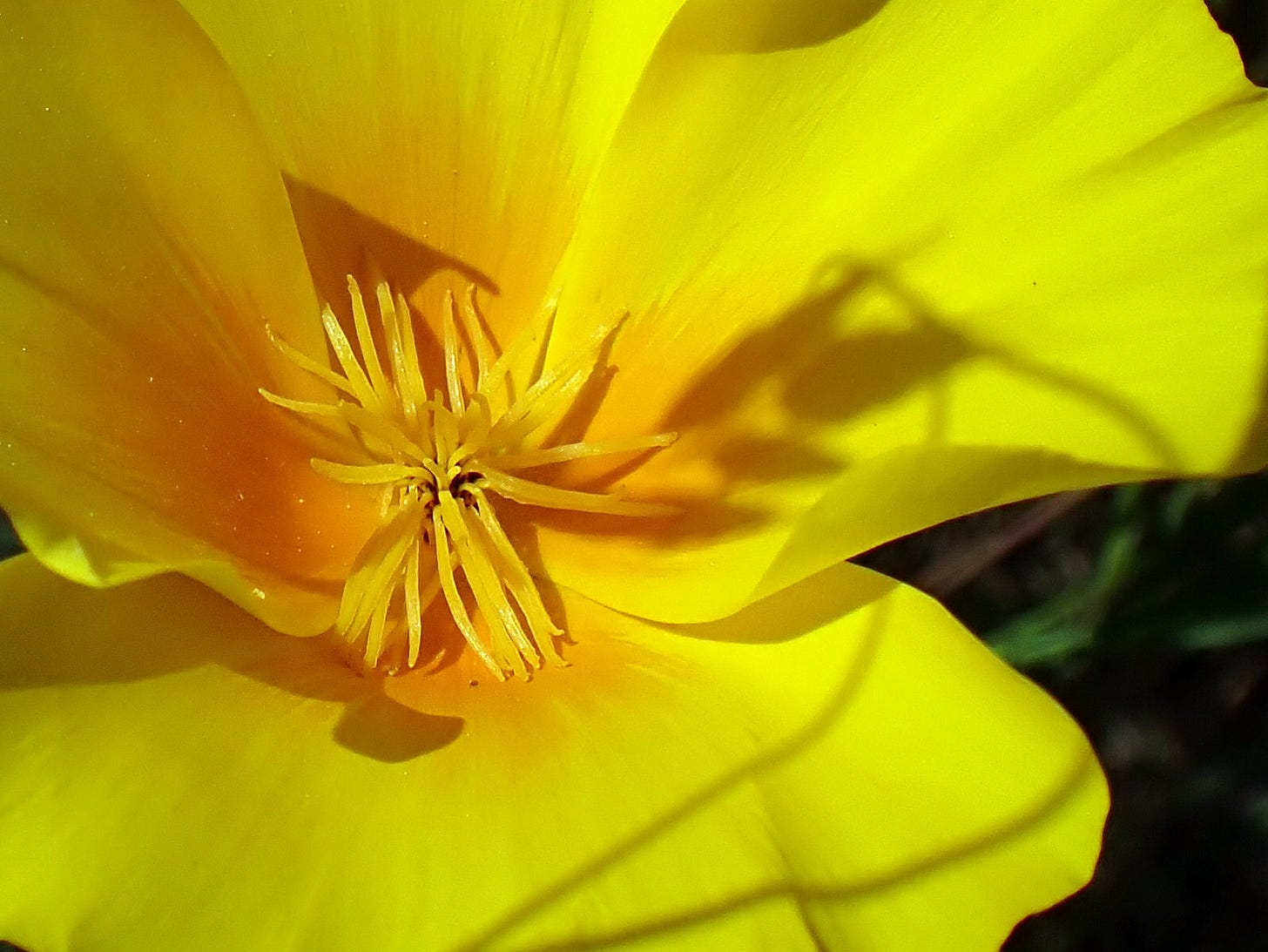

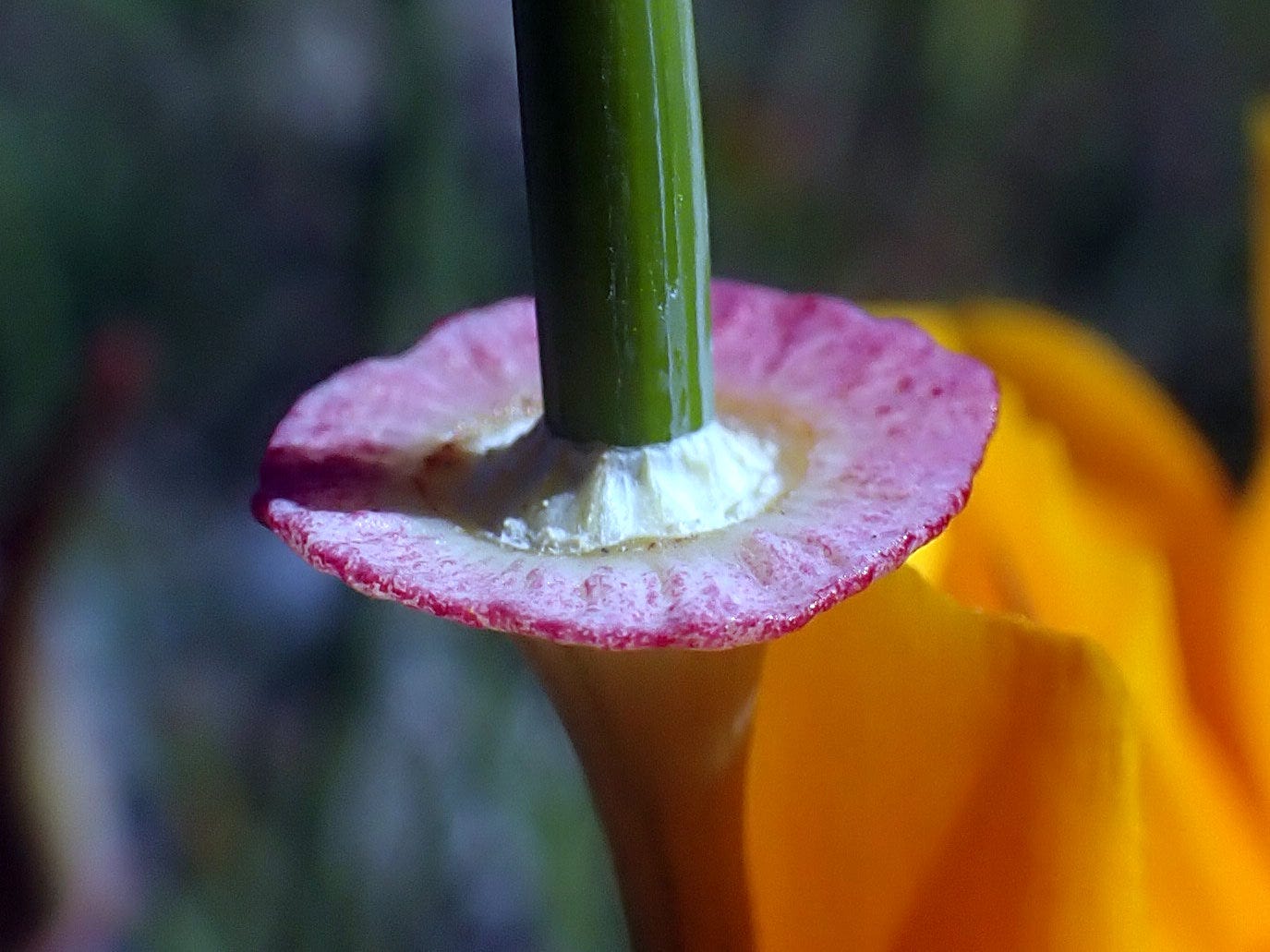
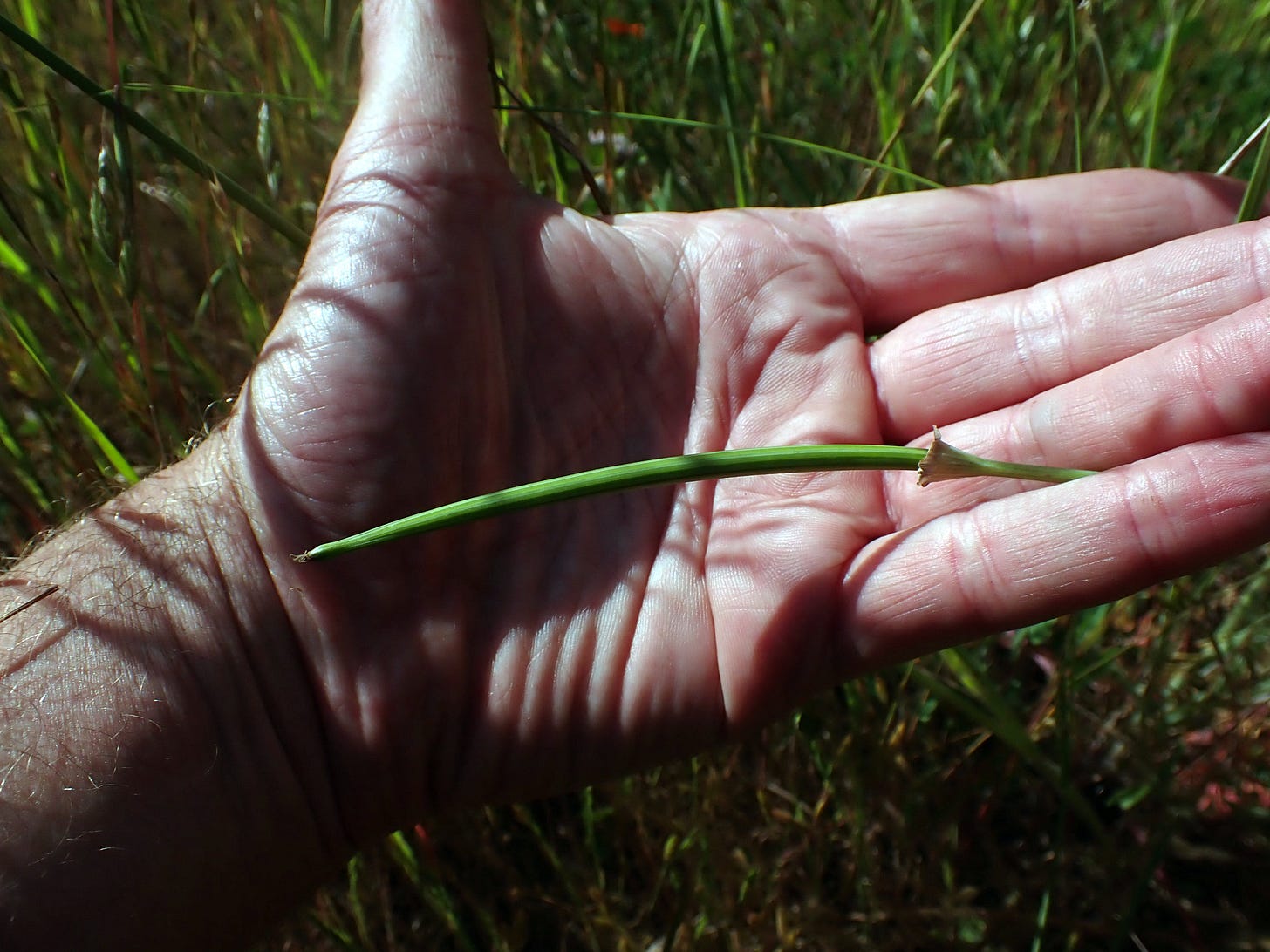

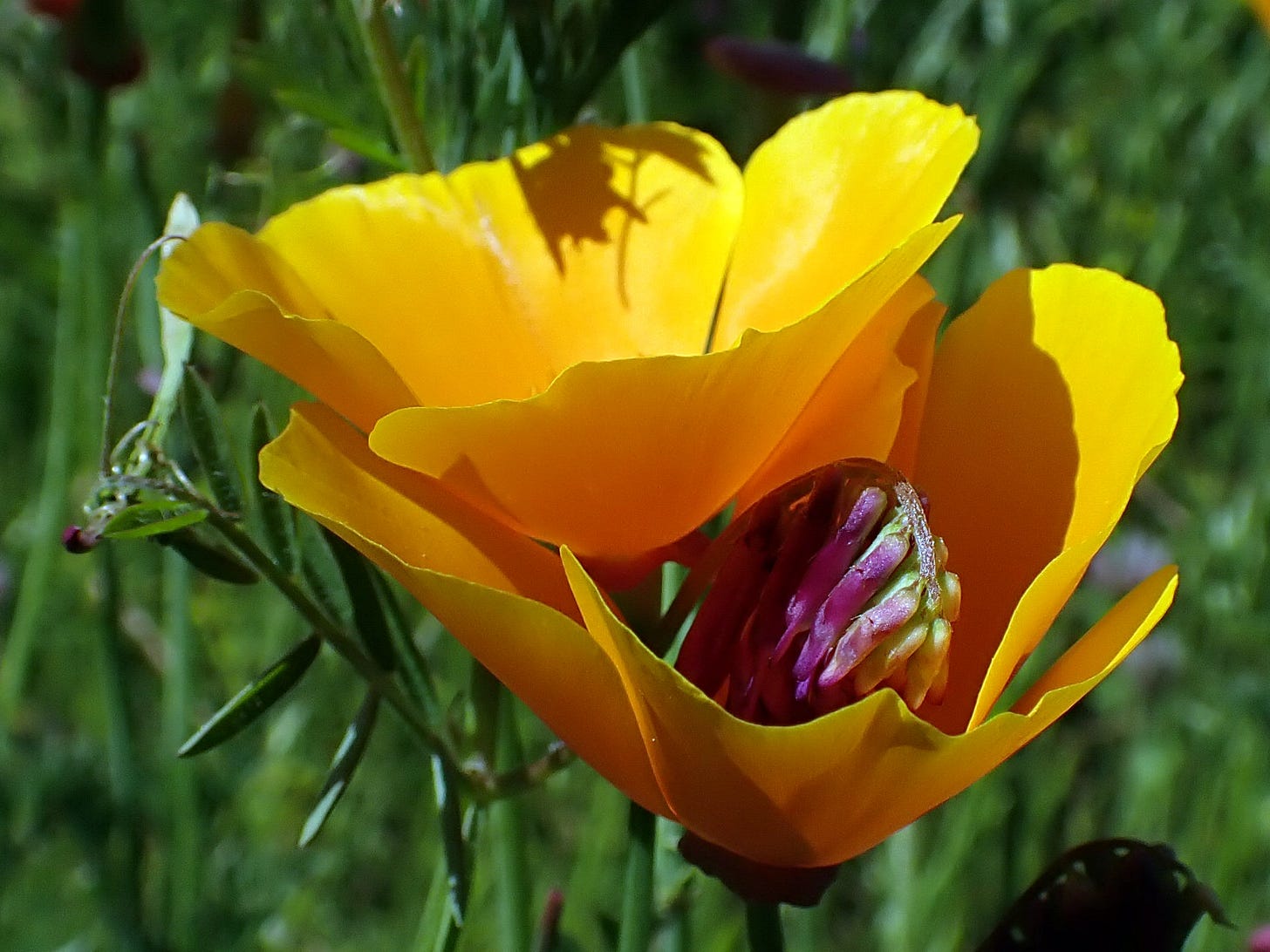
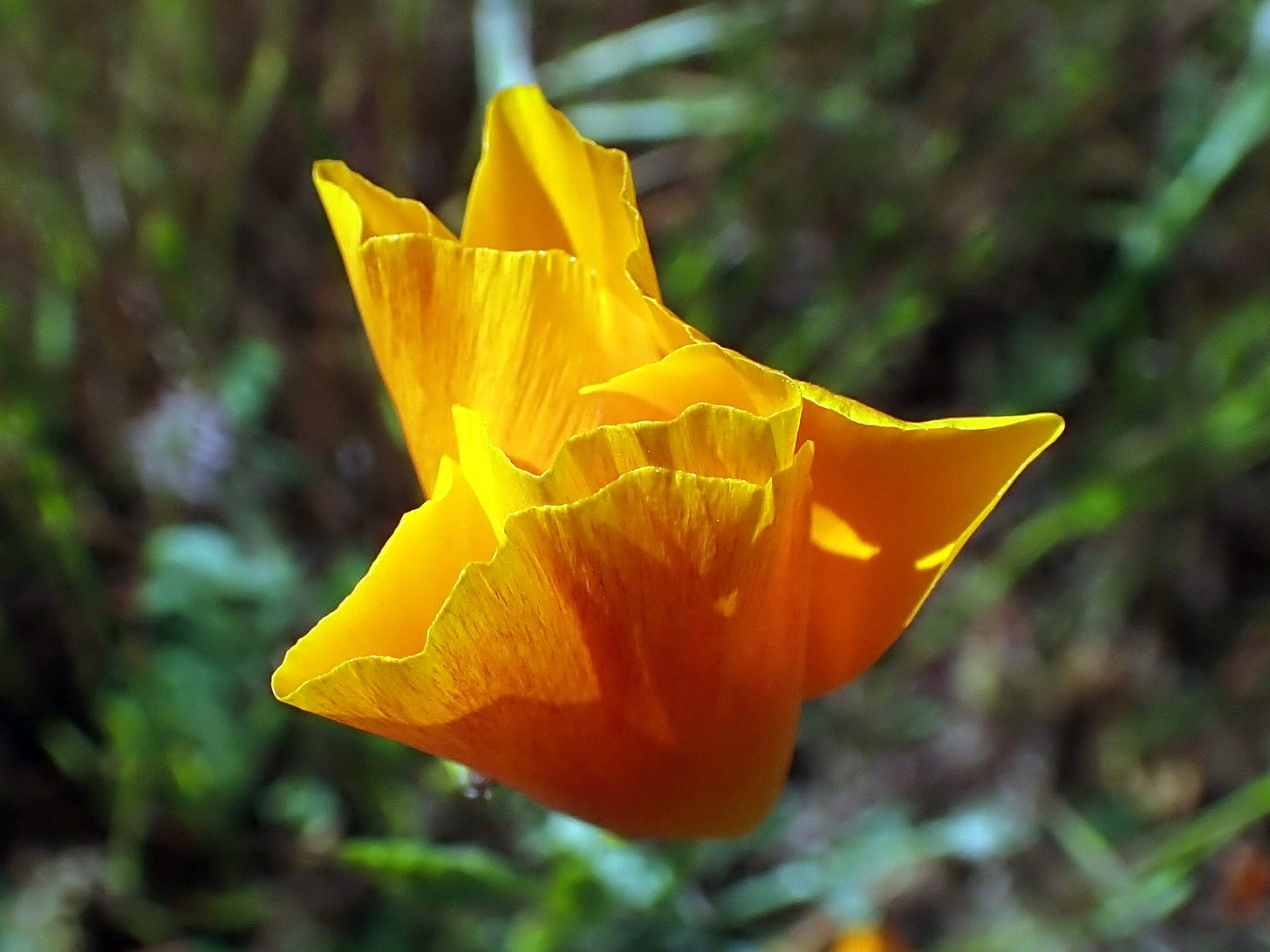

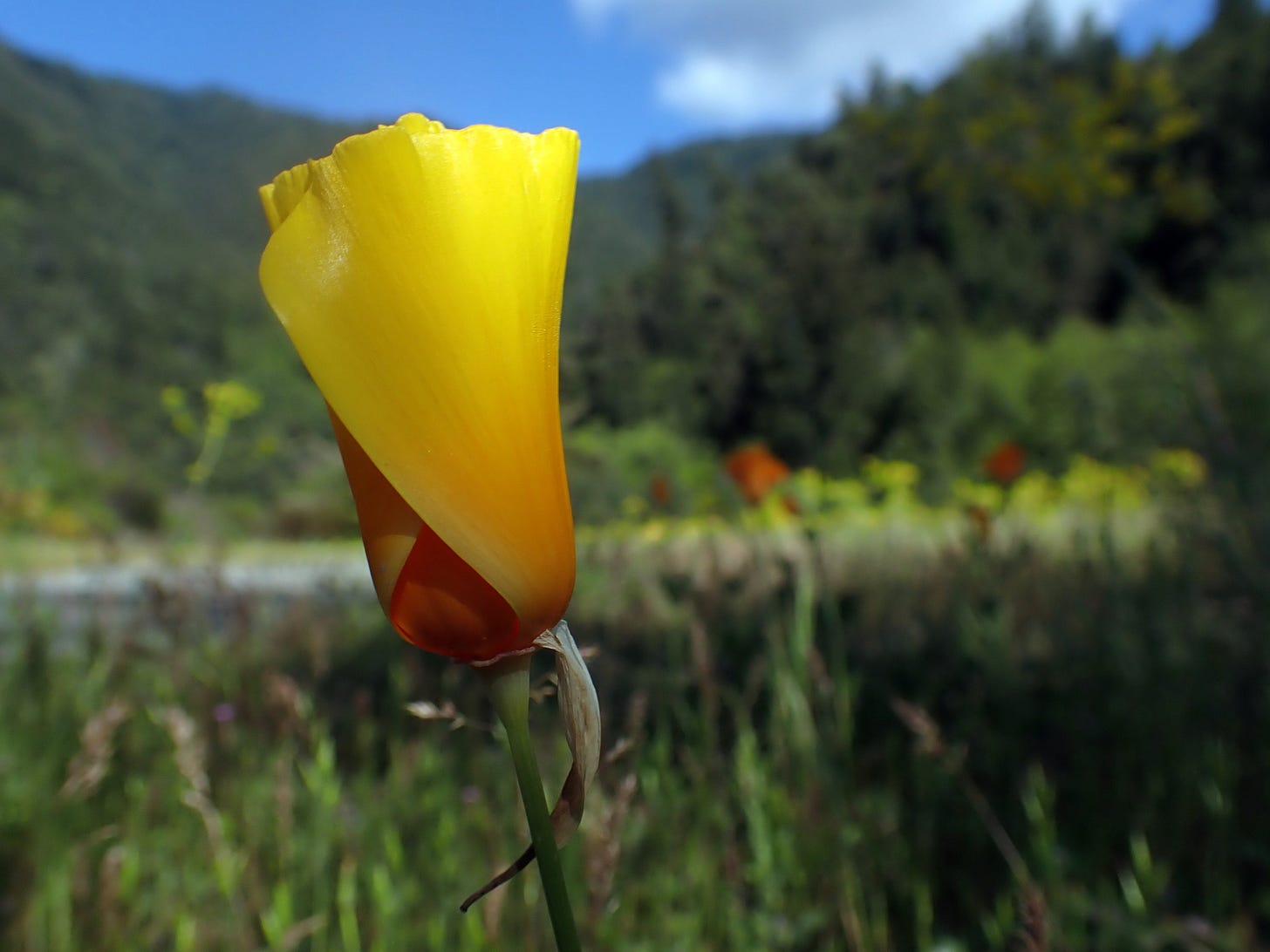
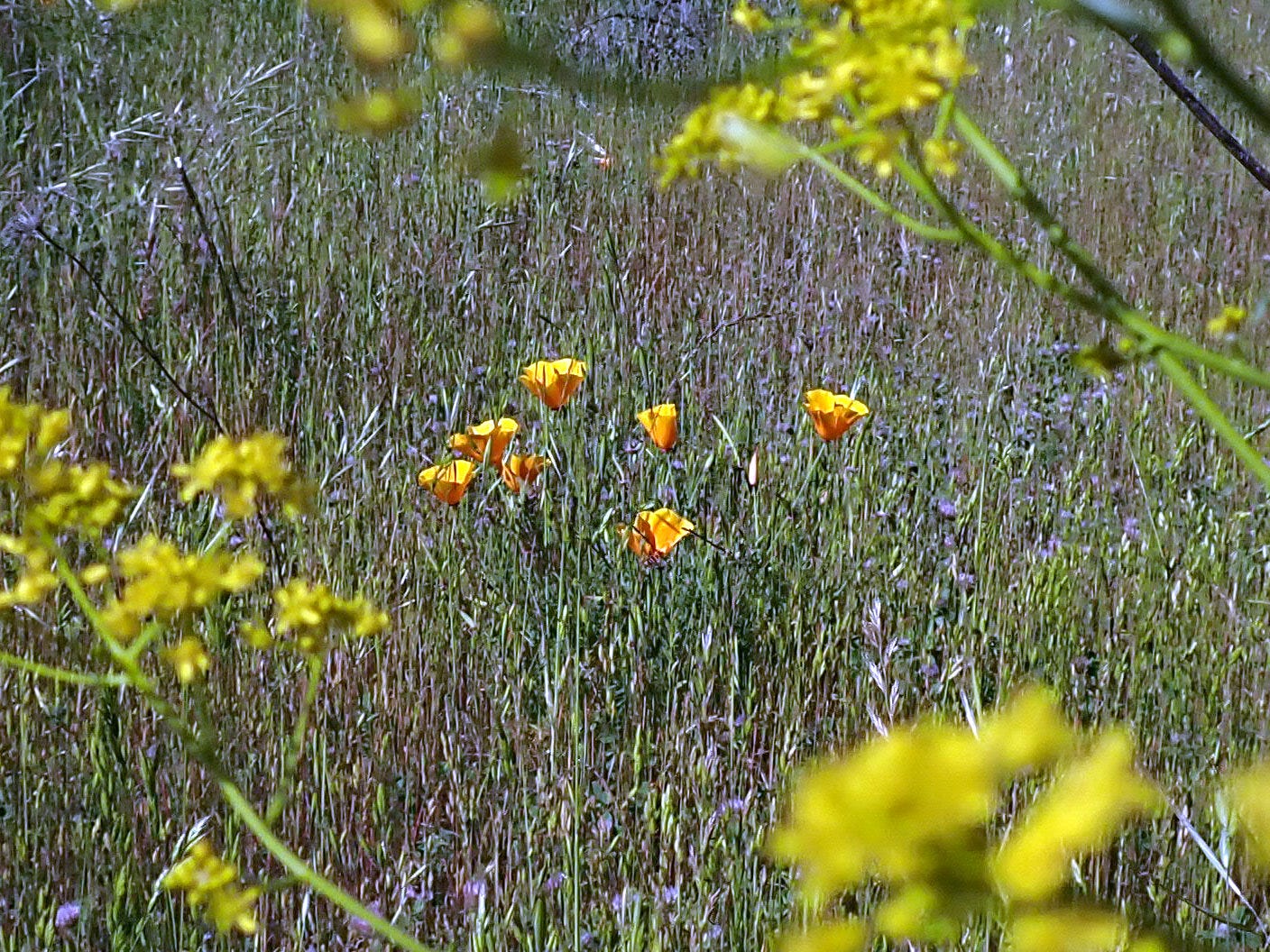
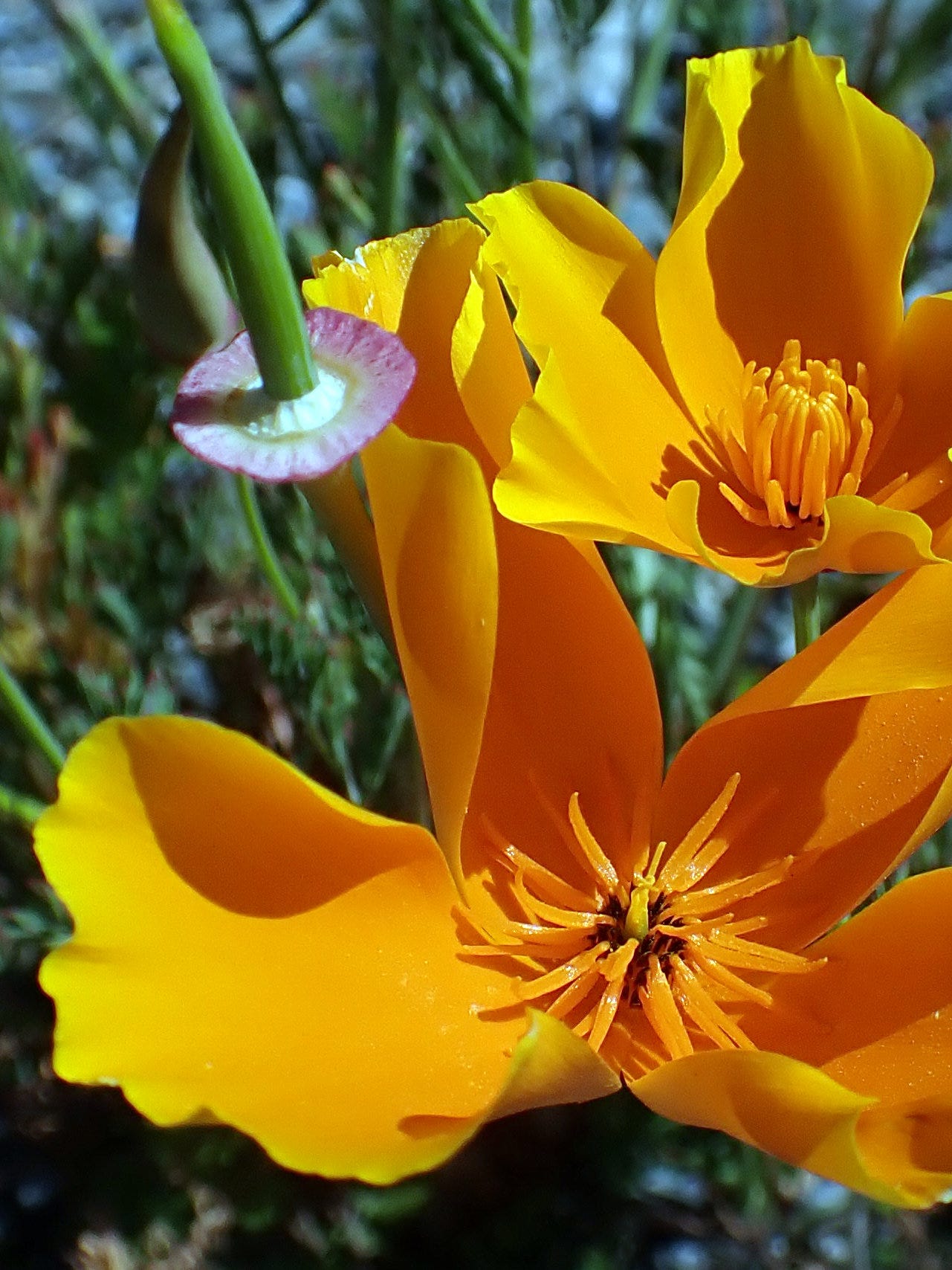
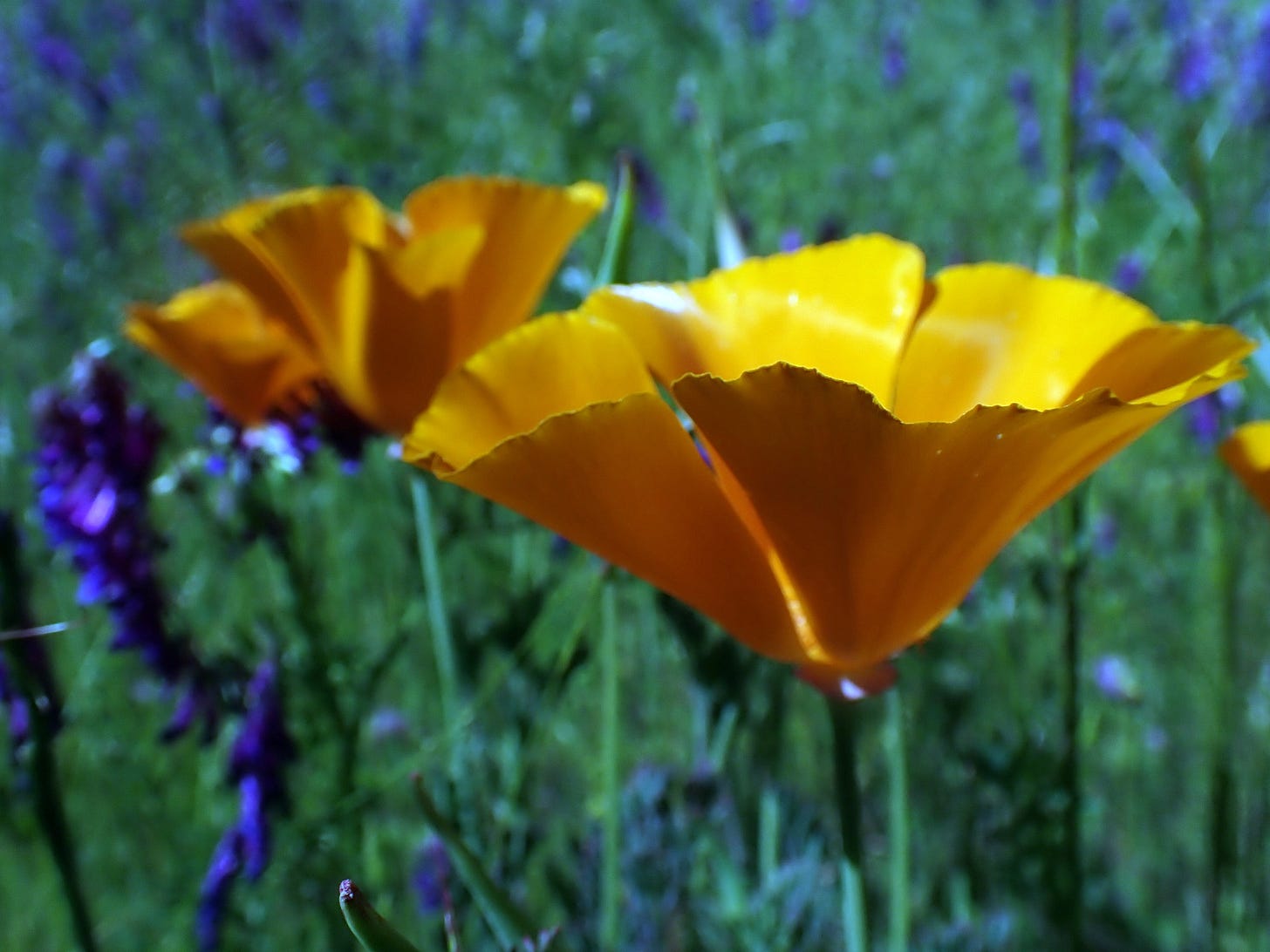
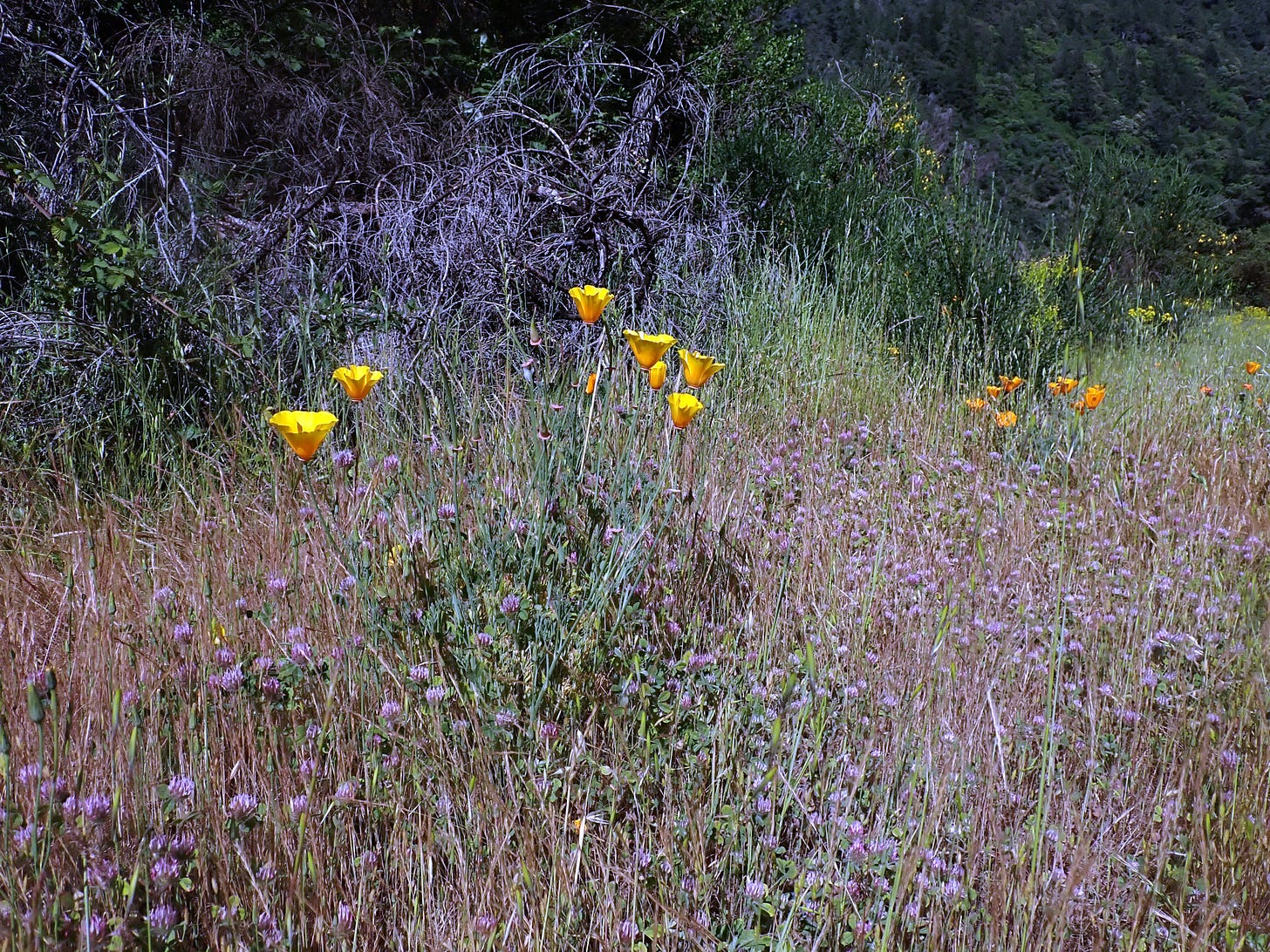
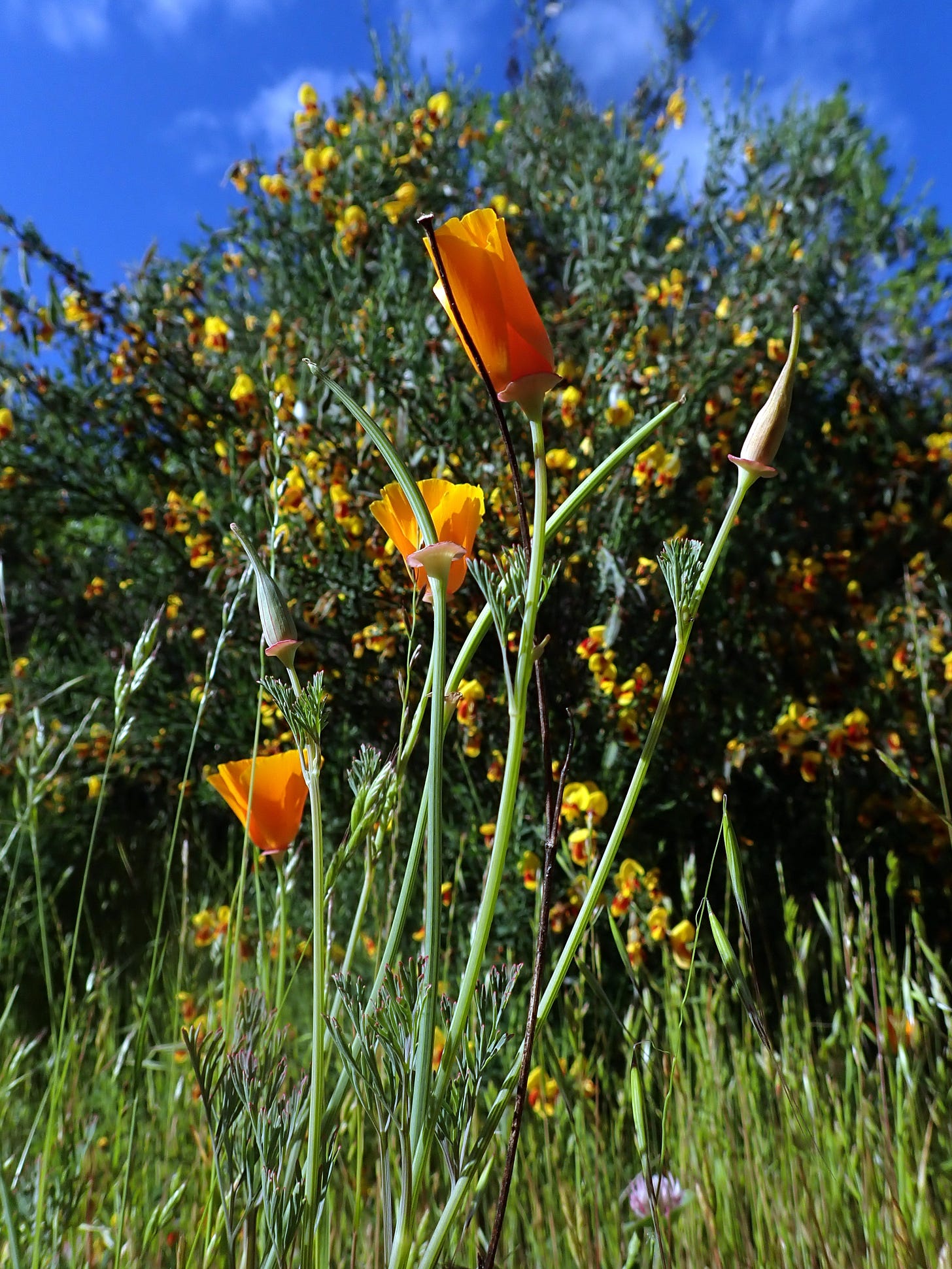
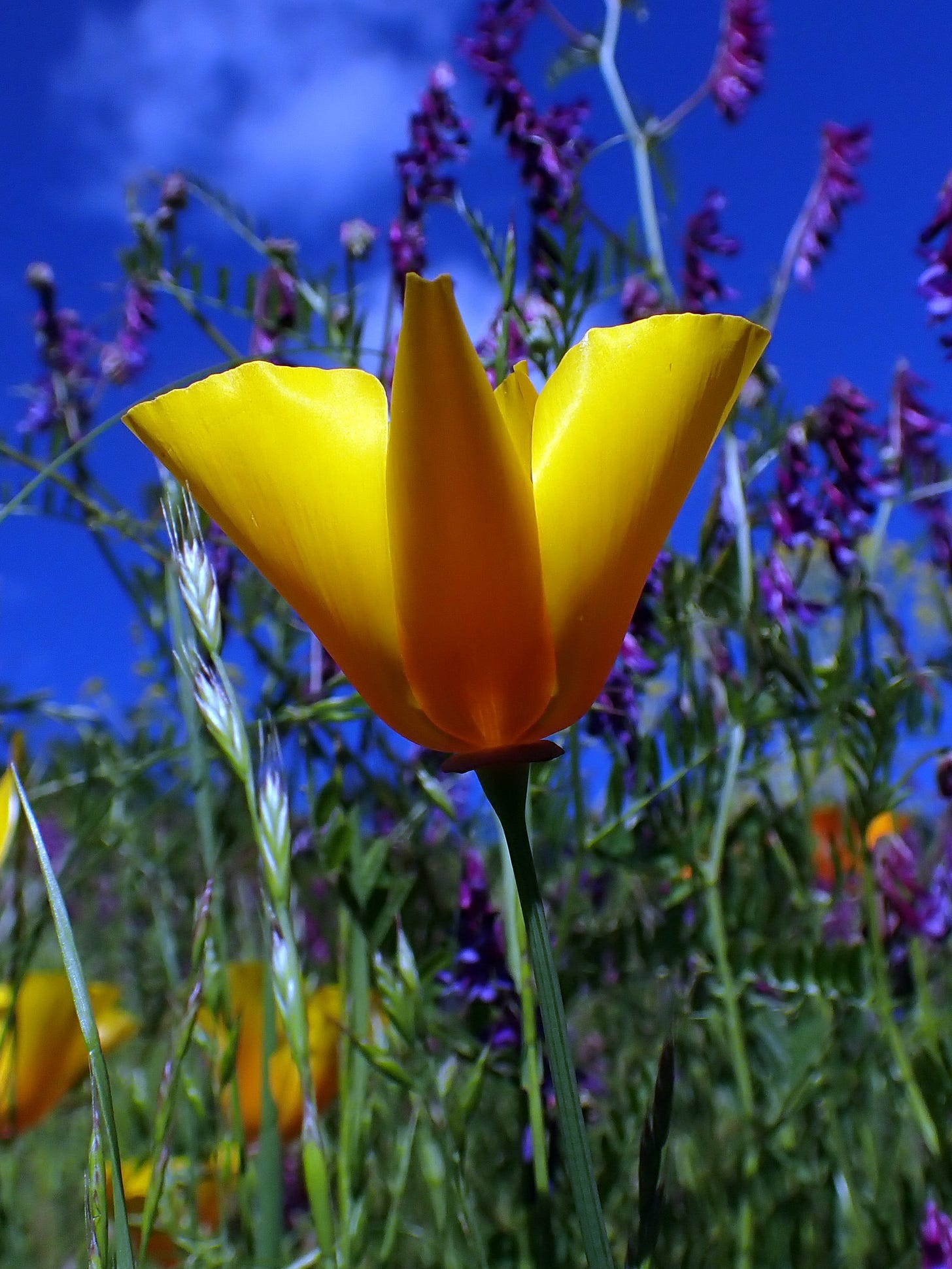
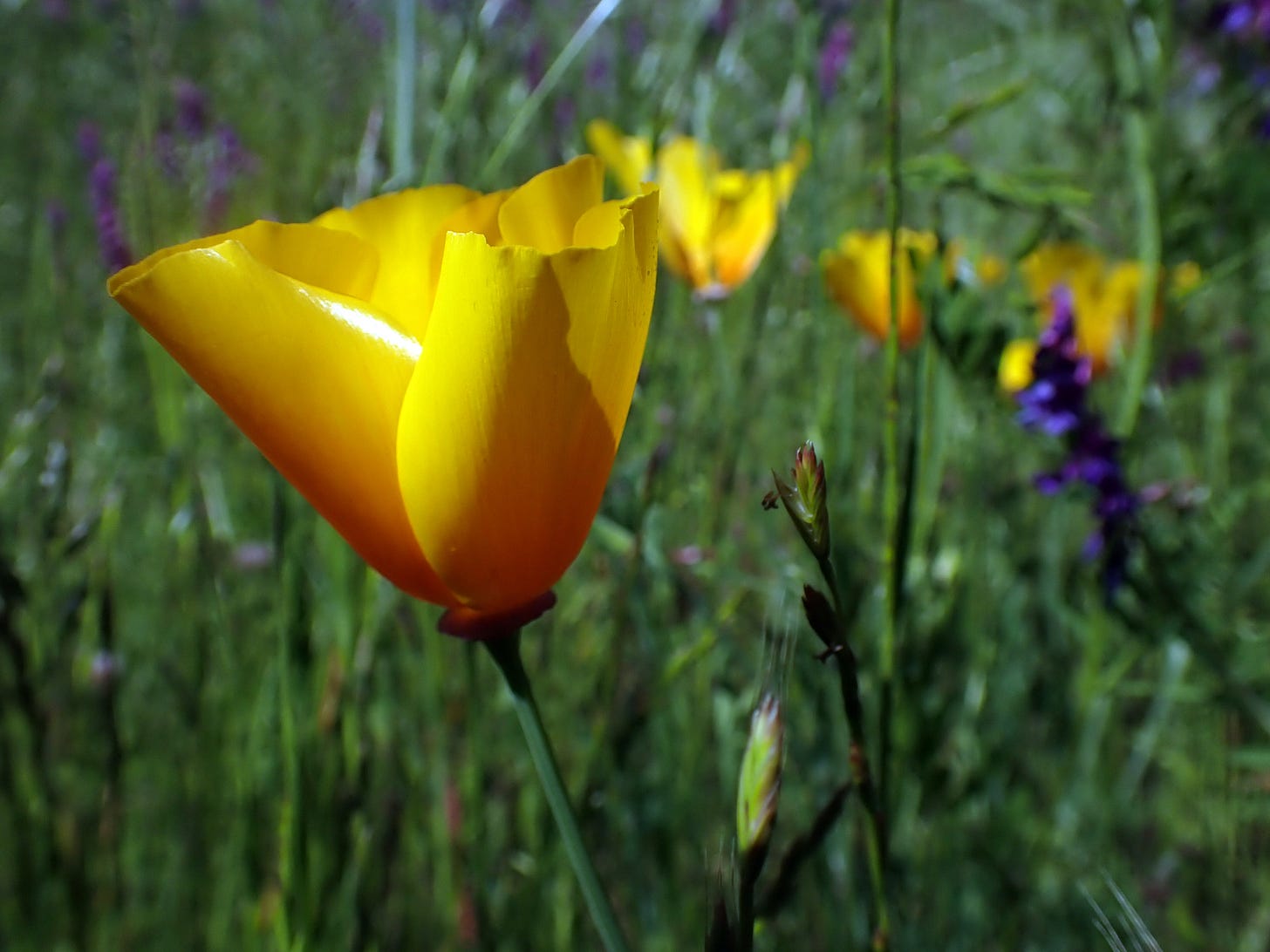
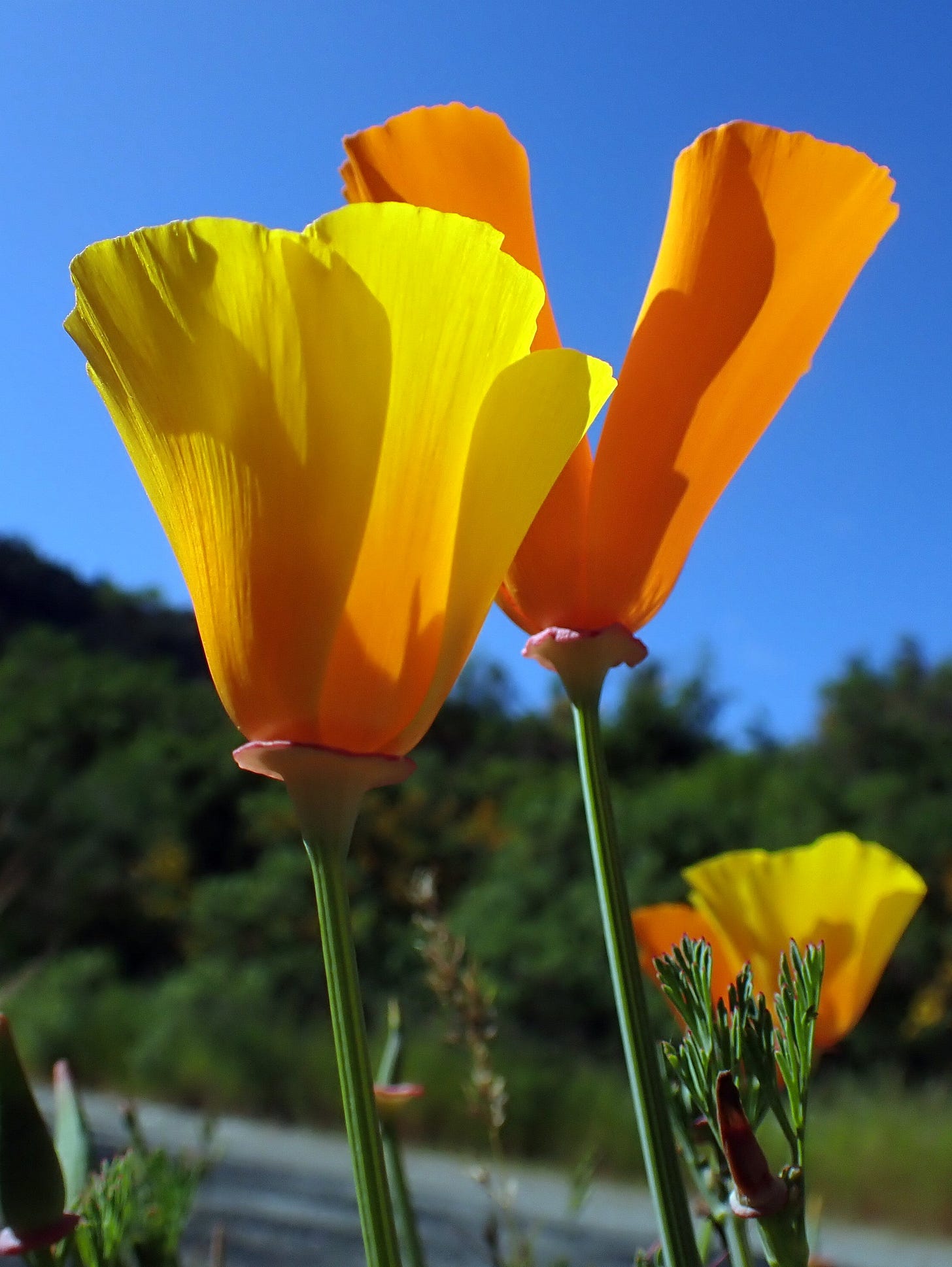
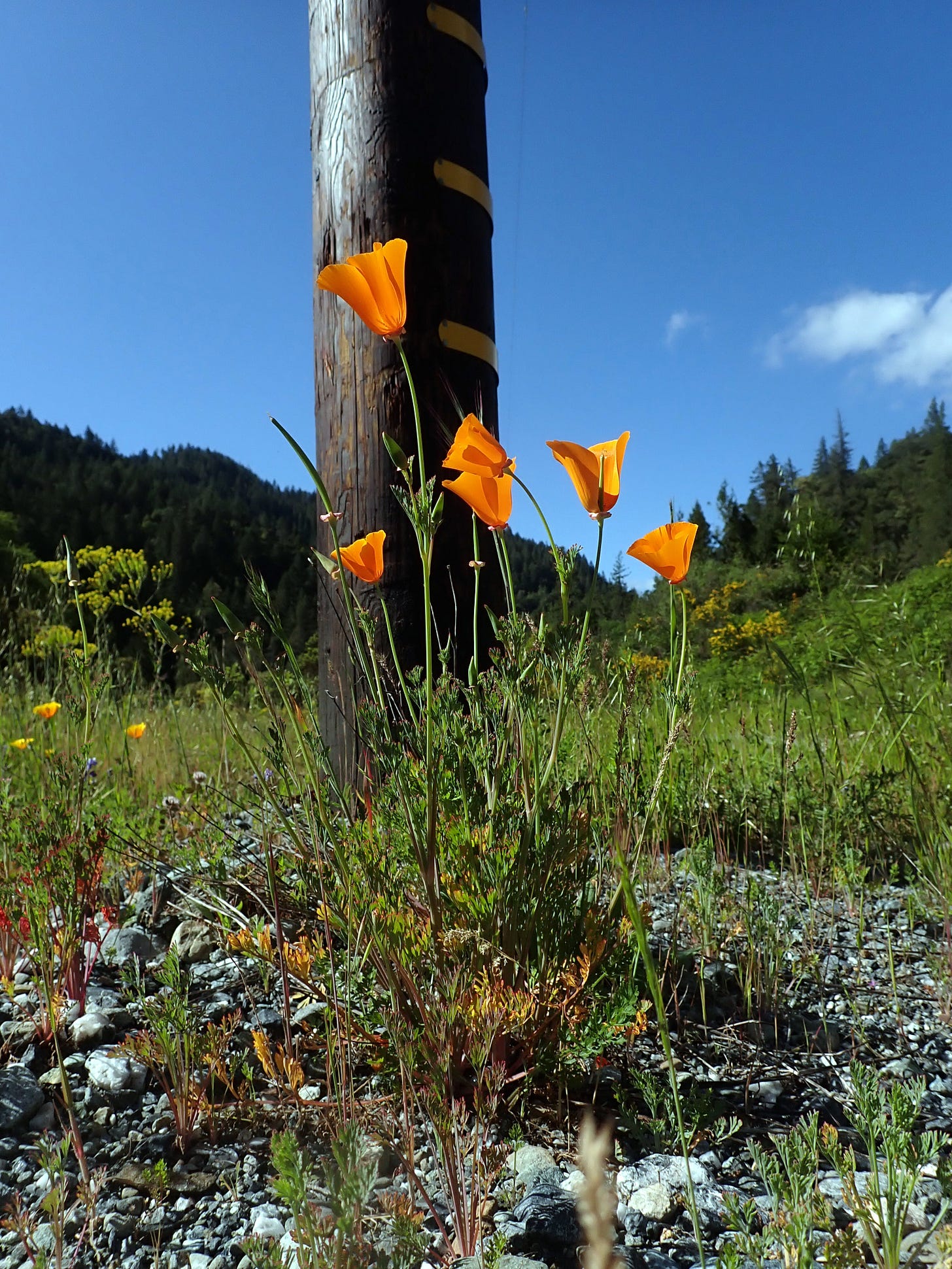
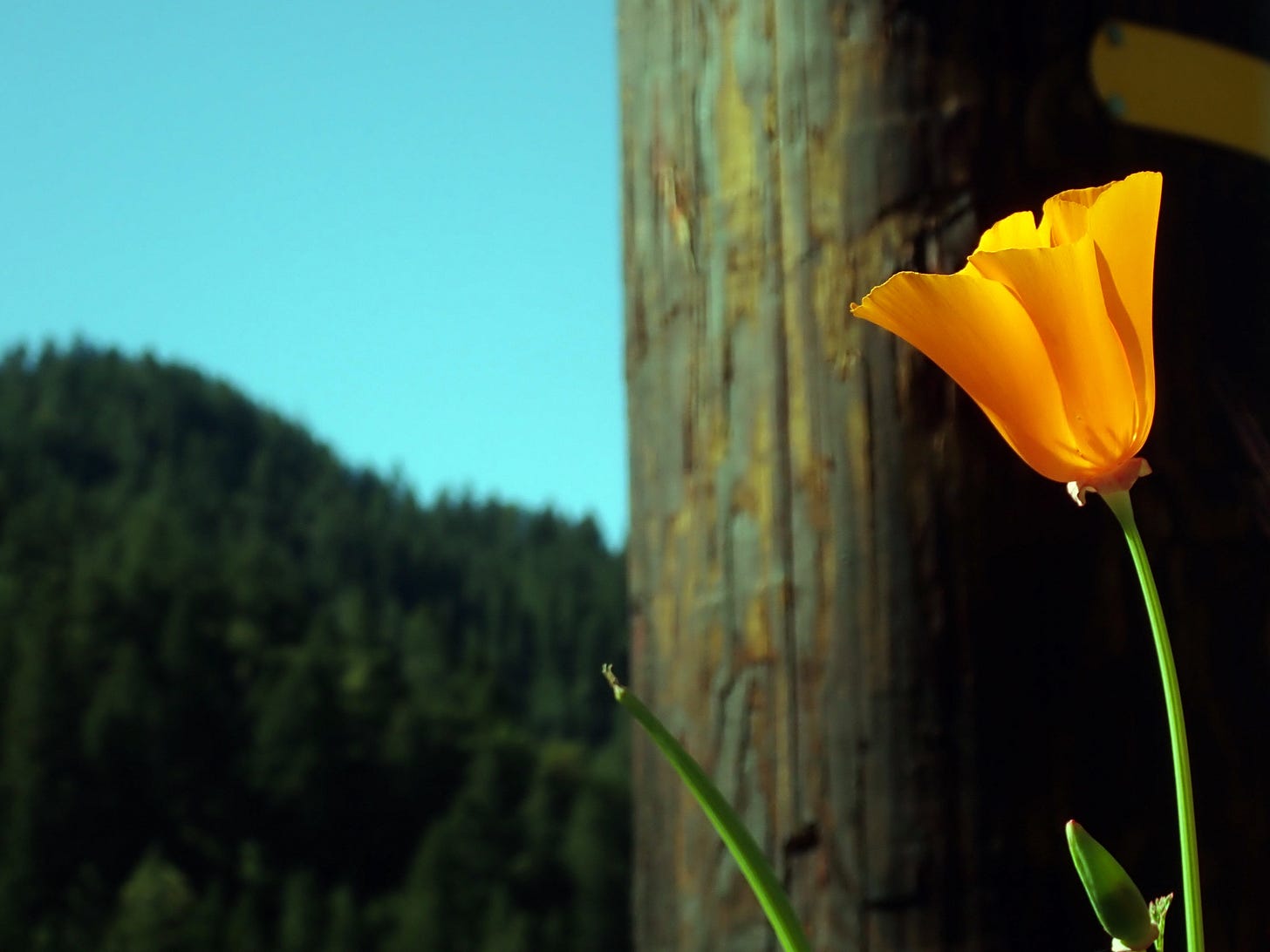
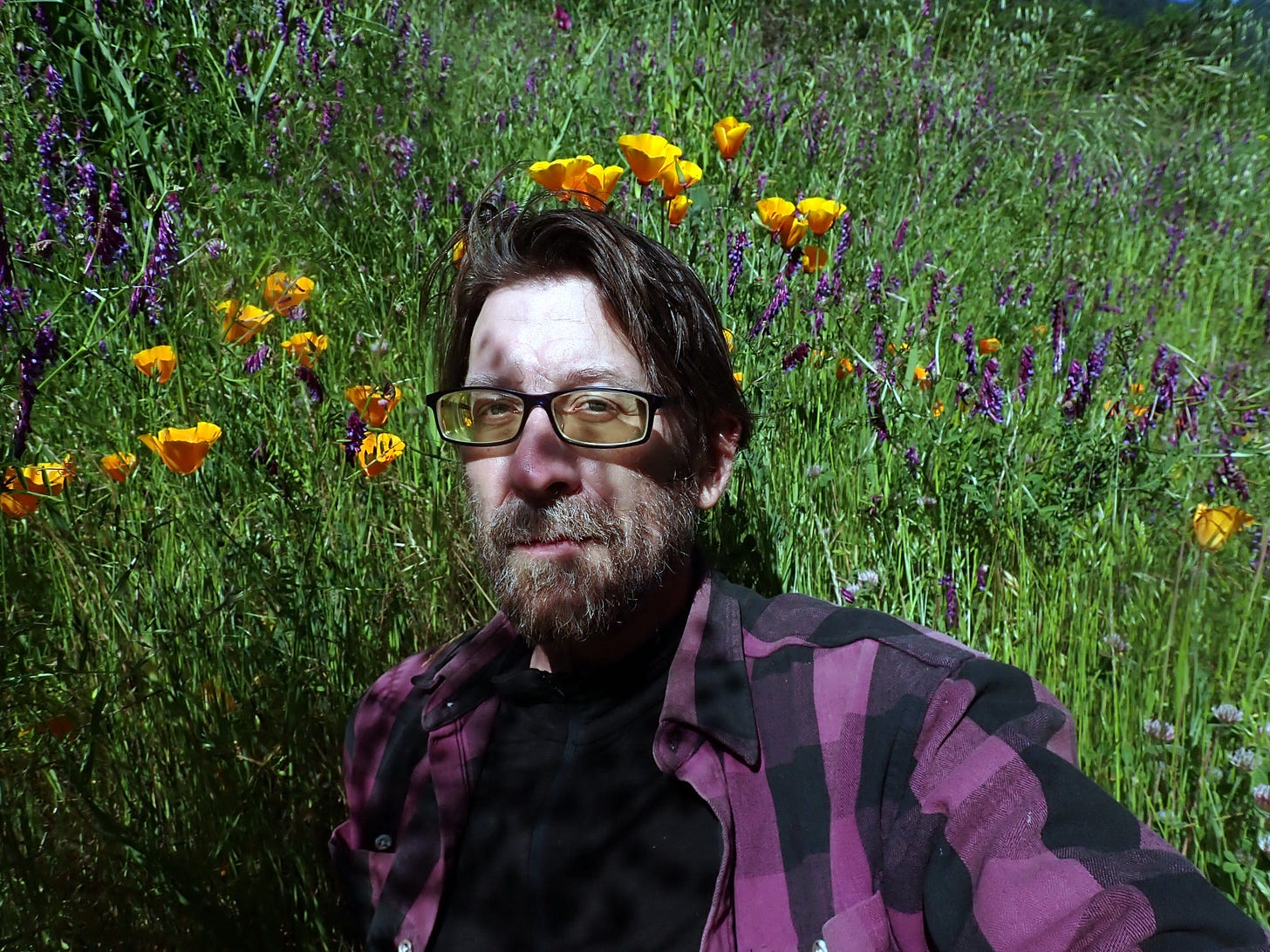
Yay! I love love love Cal poppies. They were our (very short-lived) floral “arrangements” at our wedding. I wore orange shoes to match. :) Not sure if you encountered this when you were in the Willamette Valley — but the native plant purists here sometimes say they’re not native to this area and advocate pulling them. Argh. I’m not convinced they’re correct and wouldn’t pull them even if they were. They provide a nice dose of pollen for the earliest emerging bumblebee queens as well as blooming all summer and well into fall. Total workhorses for native pollinators. I love to watch marble-size bumblebees pinball through a patch of poppies, almost bearing the blooms down to the ground with their weight. Such a summertime joy.
Thanks for the interesting story about California poppies. We might think they are universally loved, but here’s a story about nativists in San Francisco who ask us to make distinctions among isolated populations of sub-species that have developed: https://milliontrees.me/2011/04/23/hybridization-genetic-pollution-or-a-natural-process/ In this case, the purists demanded the eradication of the “wrong” sub-species, which they considered genetic pollution.